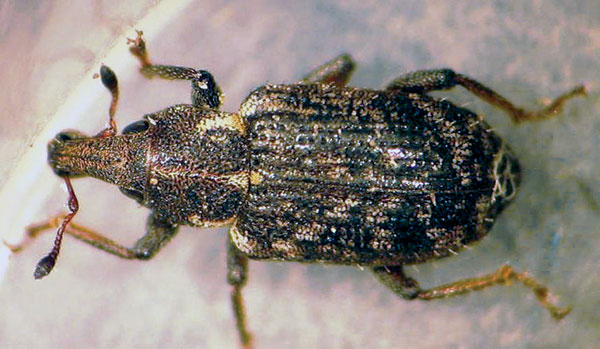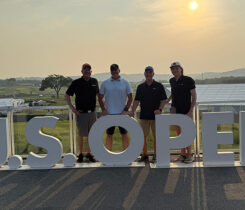Turf Pest of the Month: Contending with the ABW

The annual bluegrass weevil (ABW) has been pestering golf course superintendents for more than 70 years. Experts say scouting is a critical component of ABW control. (Photo: Ben McGraw)
The annual bluegrass weevil (ABW) typically overwinters in the woods, and after spring thaw, the pests start migrating out toward turf areas that have a lot of Poa annua, according to Ian Rodriguez, Ph.D., technical services manager for Quali-Pro.
Upon reaching the areas of golf courses with Poa annua, ABWs mate and lay eggs. The larvae hatch and burrow inside the grass stems. When the larvae are small, damage isn’t visible. The larvae go through several molts inside of the grass stem, and after their third larval stage, they leave the stems and start feeding on the crowns of the grass.
“That’s when you start to see the actual damage,” Rodriguez says. “Superintendents may start seeing the pest in catch baskets when they mow greens or even in vacuums or traps.”
The pests themselves are about an eighth of an inch and gray to black in color. The larvae look like little grubs. Damage in the turfgrass looks like yellowing in the turf initially, and then it turns to brown. Rodriguez says that at first, the damage might be mistaken for a disease.
A challenge with the pest, Rodriguez says, is that superintendents shouldn’t wait until they see damage to control it.
“You have to be proactive and looking for this pest way before the damage shows up,” he says. “You can monitor on your own course, follow online trackers and Extension service information or hire consultants to track it for you. The big challenge to it is timing your applications. If you spray when it’s an adult peak, it’s different than what you will spray two or three weeks from now.”
As with any turfgrass pest, practicing good water management, maintaining proper mowing heights and ensuring good fertility can help minimize damage in the turfgrass.
“If you do a poor job on any of those, the damage will be more severe because the grass won’t be growing as much, it’ll take longer to recover and you will notice a lower threshold for damage,” Rodriguez says.
Brought to you by Quali-Pro.











